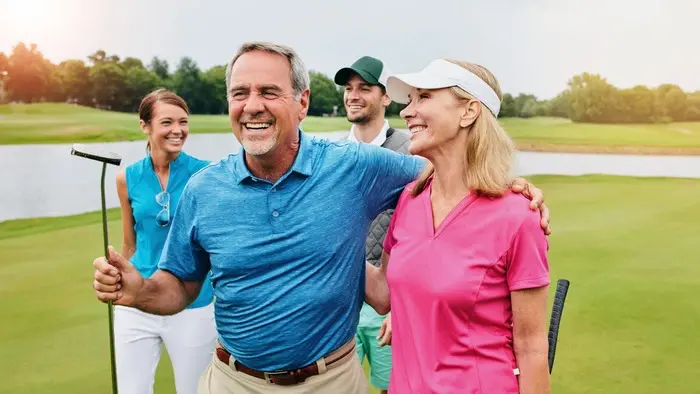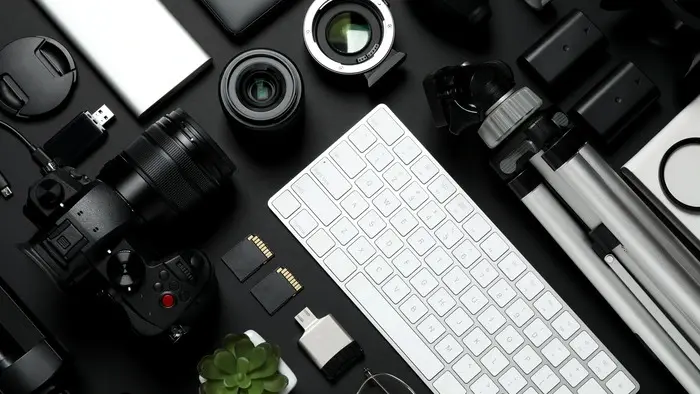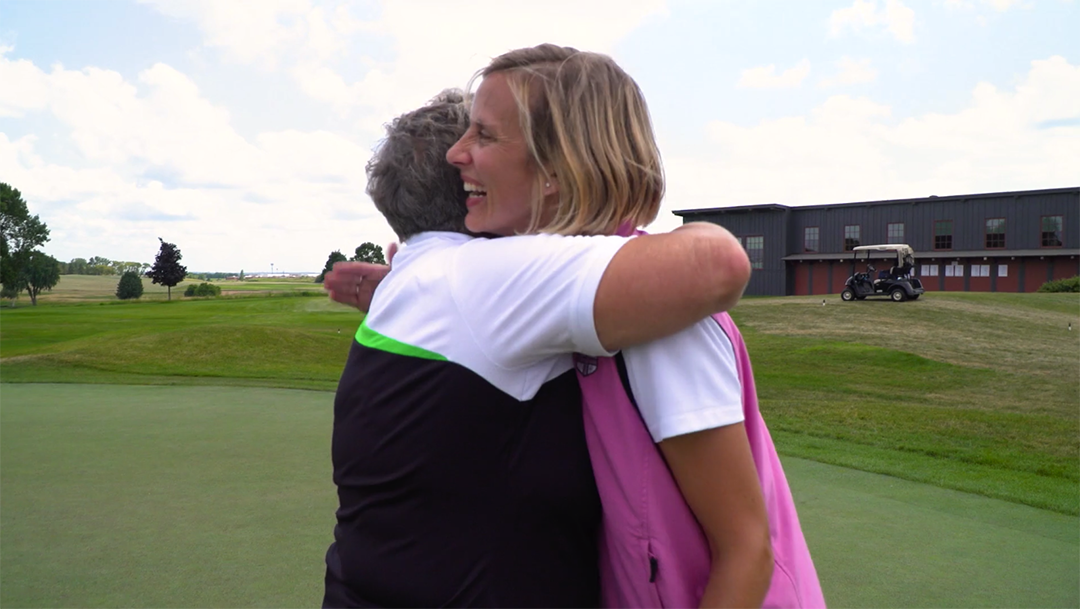Finding Your Club’s Unique Voice: The Foundation of Every Great Anthem Video
Think of a Nike commercial that makes you want to lace up your shoes and chase greatness — even if you’re not an athlete. Or an Apple launch video...
5 min read
 Maggie Heil
:
July 09, 2025
Maggie Heil
:
July 09, 2025
It’s been said that a picture is worth a thousand words—so what does that make video worth?
For private clubs looking to connect with prospective members, video offers something no other medium can: the ability to show, not just tell. Whether it’s a warm welcome from a longtime member or a quiet moment on the golf course at golden hour, video invites people to imagine themselves as part of your community.
“Video can take you places. It can teach you things. And it's a tool that can introduce you to people you've never known before,” said Ed Heil, President and CEO of StoryTeller. “That makes it a perfect marketing tool for private clubs.”
In a recent episode of Crushing Club Marketing, Ed sat down with Steve Mulholland, Creative Director at StoryTeller, to unpack how clubs can make the most of video, especially when it lives on the homepage or About page of your website.
Their key takeaway? All videos are not created equal. And if you want to stand out in a crowded marketplace, your club video must be more than just beautiful. It has to be intentional.
Many club leaders start the video production process by thinking about gear, drone shots, or a list of amenities to feature. But as Steve explains, the real starting point is much simpler and more powerful.
“The thing we try to focus on first and foremost is story,” he said. “What do you want to say? How do you want the audience to feel after they’ve watched your video?”
That shift in thinking puts the viewer first—a perspective many clubs overlook.
“A lot of people approach video by thinking, ‘What do I want to show them?’” Ed added. “But the better question is, ‘What are they looking for? And how do I want them to feel after watching?”
By identifying your audience, clarifying your message, and visualizing the emotional takeaway, your club can begin creating a video that actually connects.
It's common for clubs to say they’re about “family,” but that phrase alone won’t distinguish you. To make your video stand out, you need to define what family means in the context of your club and what makes your experience unique.
“We want to create a sense of time and place,” Steve explained. “What’s the experience like of being at your club? Maybe it’s the feeling of driving down a flower-lined driveway, exhaling as you arrive. That’s what we want to capture in video.”
Clubs on a lake might want to lean into that visual serenity. Urban clubs might showcase their architecture or rooftop views. But beyond physical features, video is a chance to capture the spirit of your club: your culture, your personality, and your members' lived experiences.
Ed and Steve advocate for a documentary-style approach when producing most club videos. That means letting the story emerge from the people who live it, like staff, members, and directors, rather than relying on a predetermined script.
“You discover the story through the people who live it,” Steve said. “We don’t script it in advance. We interview people, then build the story in post-production using their words.”
That doesn’t mean showing up unprepared. “We always prep people,” Ed added. “We let them know what we’re trying to understand so they can speak authentically, rather than reading a line off a teleprompter.”
This approach makes your video feel more real and relatable, especially when your audience is a prospective member. “You want to feel like the person on camera is talking to you,” Ed said. “That’s hard to pull off with a canned line.”
A compelling story needs the right storytellers. And while it’s tempting to default to club leadership, sometimes your most effective voices are the people who mirror your audience.
“Don’t always go to the board members or the GM,” Ed said. “Sometimes the best characters are members who are just like the people you’re trying to attract.”
“You want talkers—people with passion who can tell a story,” Steve added. “Not everyone needs to recite your core values. We want to hear what they love about their club in their own words.”
For clubs targeting families, that might mean a young couple. For career-focused members, maybe it’s someone who escapes to the club after a long week. Choose voices that can speak to the real, human experience of being part of your community.
Interviewing people on camera isn’t easy. But done well, it can yield gold.
“Avoid yes or no questions,” Steve said. “Instead, offer an observation and follow up with, ‘I’d love to hear your thoughts on that.’”
Ed echoed the importance of asking open-ended questions: “You’ll often get more than you expect. Sometimes you get a soundbite that’s so good, it changes the whole direction of your piece.”
But don’t be afraid to ask the same question in different ways to get a shorter or more focused version. And remember: great interviews feel like conversations, not interrogations.
Drones have revolutionized video production, especially for clubs with beautiful grounds. But they’re just one tool in the toolkit, and they don’t tell the whole story.
“Drones are great at setting the scene,” Steve said. “They give you that majestic aerial shot. But they can’t capture the fellowship of your members or the intimacy of a tennis match or poolside conversation.”
For one shoot at a San Francisco club, the team wasn’t allowed to use drones. Instead, they mounted cameras to golf carts with a gimbal system to capture dynamic, immersive shots on the ground.
“That movement gave the piece energy,” Steve said. “Sometimes ground-level footage is even more compelling than drone footage.”
Storytelling in video isn’t just about words. It’s about framing, movement, detail, and light.
“The magic of cinematography is controlling the frame,” Steve explained. “You’re letting the viewer see only what you want them to see.”
That means mixing wide shots, medium shots, and close-ups. It means noticing the angle of a painting on a wall or capturing the sun slanting across a fairway. And it means pairing all of it with the right music.
“Music dictates the feeling the audience walks away with,” Steve said. “Don’t underestimate your video. Go big. If it sounds like something from Raiders of the Lost Ark, it might be perfect.”
Perhaps the most under-appreciated part of video production is editing, where the story finally comes together. And that means making tough decisions.
“Producers fall in love with their soundbites,” Ed admitted. “You might love a story someone tells, but if it takes 90 seconds to get there, it’s probably not going to make the cut.”
“Keep the best of the best,” Steve said. “You want a cohesive story, not redundancy. If three people say the same thing, pick the one who says it best.”
Editing is where your tone, pace, emotion, and message crystallize. It’s the place where all the small decisions—from music and visuals to structure and length—start working together to make your club shine.
If your club is considering a video project, Ed and Steve offered two pieces of parting advice:
“Trust your judgment—but rely on others,” Steve said. “You can’t do it all yourself. Let your team help you see things you might miss.”
“And always come back to the message,” Ed added. “What do you want the viewer to feel when it’s over? Start there. Everything else follows.”
In the end, your website video isn’t just about showing off your course or amenities. It’s about telling a story that moves people—emotionally and practically—to take the next step.
Because if someone can see themselves in your club, they’re already halfway to joining.

Think of a Nike commercial that makes you want to lace up your shoes and chase greatness — even if you’re not an athlete. Or an Apple launch video...

In the private club industry, storytelling is a proven approach for clubs to differentiate themselves. Your club’s identity, culture, and member...

This blog was updated for accuracy and relevance on March 6, 2025.